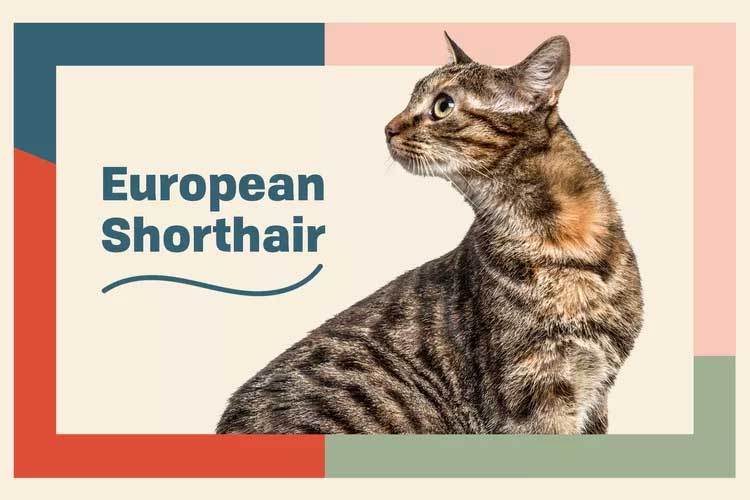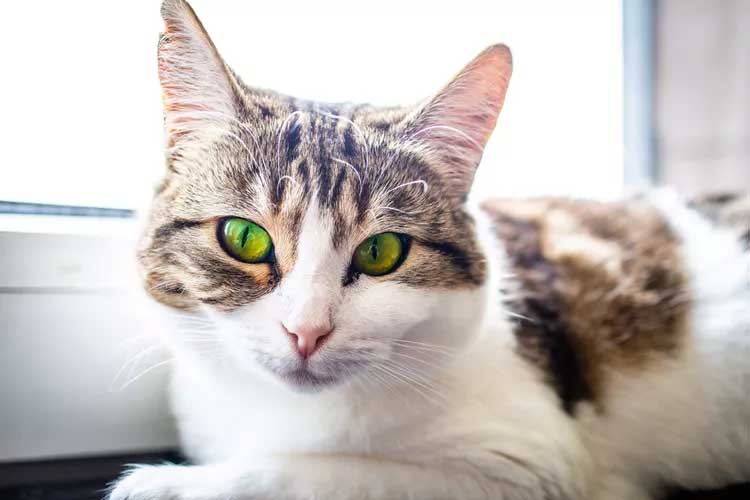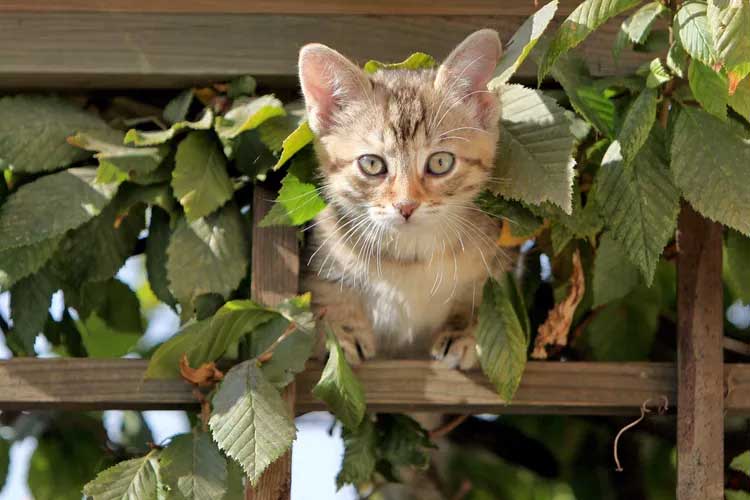European shorthair cats are adaptable, friendly, people-pleasing pets who love to hunt and spend time with their pet parents. Learn more about the European shorthair cat breed.

European Shorthair Overview
| OFFICIAL NAME | European Shorthair |
| COMMON NAME | European Shorthair |
| PET HEIGHT | 9 to 11 inches |
| PET WEIGHT | 12 to 15 pounds |
| LIFESPAN | 15 to 20 years |
| GOOD WITH | children, dogs, families, seniors |
| TEMPERAMENT | affectionate, shy, sociable |
| INTELLIGENCE | high |
| SHEDDING AMOUNT | normal |
| PLAYFULNESS | medium |
| ENERGY LEVEL | active |
| VOCAL LEVEL | when necessary |
| COAT LENGTH | short |
| COLORS | black / ebony, blue / gray, chocolate / brown / sable, cinnamon, cream / beige / tan, fawn, lavender / silver, lilac, red / orange, white |
| OTHER TRAITS | easy to groom, easy to train, friendly toward humans, good for first-time pet owners, good lap cat, high prey drive, strong loyalty tendencies, tolerates being alone, tolerates being picked up |
One of the oldest European cat breeds, the European shorthair is the pedigreed standard of the common European house cat. These felines have round faces, medium-size bodies, and short, shiny coats of thick hair.
Known for their adaptable attitudes and friendly personalities, this cat breed also has excellent mousing abilities. When it comes to house cats, this breed is pretty easy to please. European shorthairs' low-maintenance personalities and easy grooming requirements make them a great fit for first-time owners.
While the European shorthair is one of the most popular European cat breeds, the breed remains relatively rare in the rest of the world.
Appearance
European shorthair cats are medium-size cats with a firm build and typically weigh 12–15 pounds. They have rounded faces and bodies and are somewhat susceptible to developing a tummy pooch. Their vibrant, bright eyes come in shades of blue, green, or amber. They can also be odd-eyed, with one blue eye and one amber or green eye.
These moderate shedders have a short coat of straight, thick hair that comes in an array of solid colors, as well as tabby and tortoiseshell patterns. Their coats are sleek and shiny, and these hygiene-conscious cats do a lot of their own grooming.
This breed is often compared to the British shorthair and American shorthair cats breeds in terms of appearance, but the European shorthair does have some features that set him apart from the others—notably, his more muscular, stockier build.
Temperament
European shorthair cats are tolerant, friendly, and intelligent. This cat is incredibly loyal and loves to please his pet parents. They're known for being adaptable pets who can quickly adjust to new environments and make the most of wherever they are.
These devoted kitties prefer to be the leader in a group of pets. They can also be shy around new faces, and tend to keep to themselves when things get chaotic. European shorthair cats love to play and crave mental and physical stimulation. Because this breed was pedigreed from common barn cats throughout Europe, they have excellent mousing abilities and love to hunt. If you give your shorthair an interactive cat toy, he'll stalk, pounce, and bunny kick all day long.
Because these pedigreed cats have such a wide genetic background, temperament is likely to differ from cat to cat.
Living Needs
The European shorthair's preferred habitat is one with pet parents to love him, toys to play with, cat trees to climb, and a quiet day-to-day life. These pets can be timid around strangers, so homes with a changing roster of frequent visitors will make these kitties nervous.
"This cat is generally outgoing with regular family members but can be shy and timid around strangers, so ample room to hide is great for them," says Kurt Venator, DVM, PhD, and Chief Veterinary Officer at Purina.

This breed is a true outdoor enthusiast who loves to explore nature and might sneak out an open door or hop over a fence if left unattended. Quell their desire to conquer the great outdoors by attaching a kitty perch near a window or going all out with an elaborate catio. Another natural instinct you'll have to watch for is the European shorthair's desire to capture and kill rodents. They're great if you have mice you'd like eliminated, but you'll need to be extra careful with other small household pets like hamsters or gerbils.
European shorthairs generally get along with kids and other pets, but their jealousy can cause contention with other animals at times. They often can peacefully share a home with other cats and dogs, but it's dependent on both pets' individual temperaments. Just always make sure your European shorthair is well-loved and that he gets plenty of attention every day, and he'll reward you with headbutts and purring.
Care
This breed is pretty easy to groom, especially because they're notorious neat freaks when it comes to personal self-care. These kitties will do a lot of cleaning up themselves, so baths should be infrequent. Weekly brushing will keep their coats smooth and shiny, and you'll also need to regularly trim their nails and clean their ears.
Exercise comes naturally to these agile mousers. Encourage movement and play by getting your European shorthair puzzle toys that reward him with treats to stimulate him mentally and physically.
European shorthairs are generally intelligent animals who take to training easily. Positive methods with treats and praise is a great way to help him conquer tasks like litter box training.
Your European shorthair cat should be fed a diet of high-quality cat food recommended by your vet.
Health
European shorthair cats have an impressive lifespan of 15–20 years and are typically a healthy, robust breed thanks to their natural development. Because this breed has such a wide gene pool, they don't have any breed-specific health issues to look out for. Still, pay attention to your individual cat's needs and temperament and watch for signs of pain or discomfort that may indicate underlying health problems.
"Although the European shorthair is a relatively healthy breed, they may have genetic predispositions for polycystic kidney disease, brachycephalic syndrome or respiratory distress syndrome (due to the short nose and flat face), and heart disease," Venator says.
Reputable breeders will screen for health issues in your kitten, but it's important to have your cat screened regularly into adulthood. Some health problems can go undetected until later in your cat's life.
History
Experts trace the European shorthair back to ancient Rome, where these friendly cats followed Roman conquerors and made themselves at home in barns and shops throughout the continent. The contemporary breed standard technically originated in Sweden in the 20th century and remains an icon of Scandinavian domestic life. Modern breeders have worked to preserve a pedigreed, historical breed of the beloved cat.
Their attention to historical accuracy through breeding means the lovely European shorthairs of today still look remarkably like their distant Roman ancestors. While the breed is one of the most common cats in Europe, it remains rare in other parts of the world.
Fun Facts
"European shorthair" has sometimes been used as an umbrella term for common domestic cats of Europe, which causes some confusion.The European shorthair is the national cat of Finland.
The European shorthair has gone by a variety of nicknames, including Celtic shorthair and Bondkatt, which is Swedish for "farm cat."